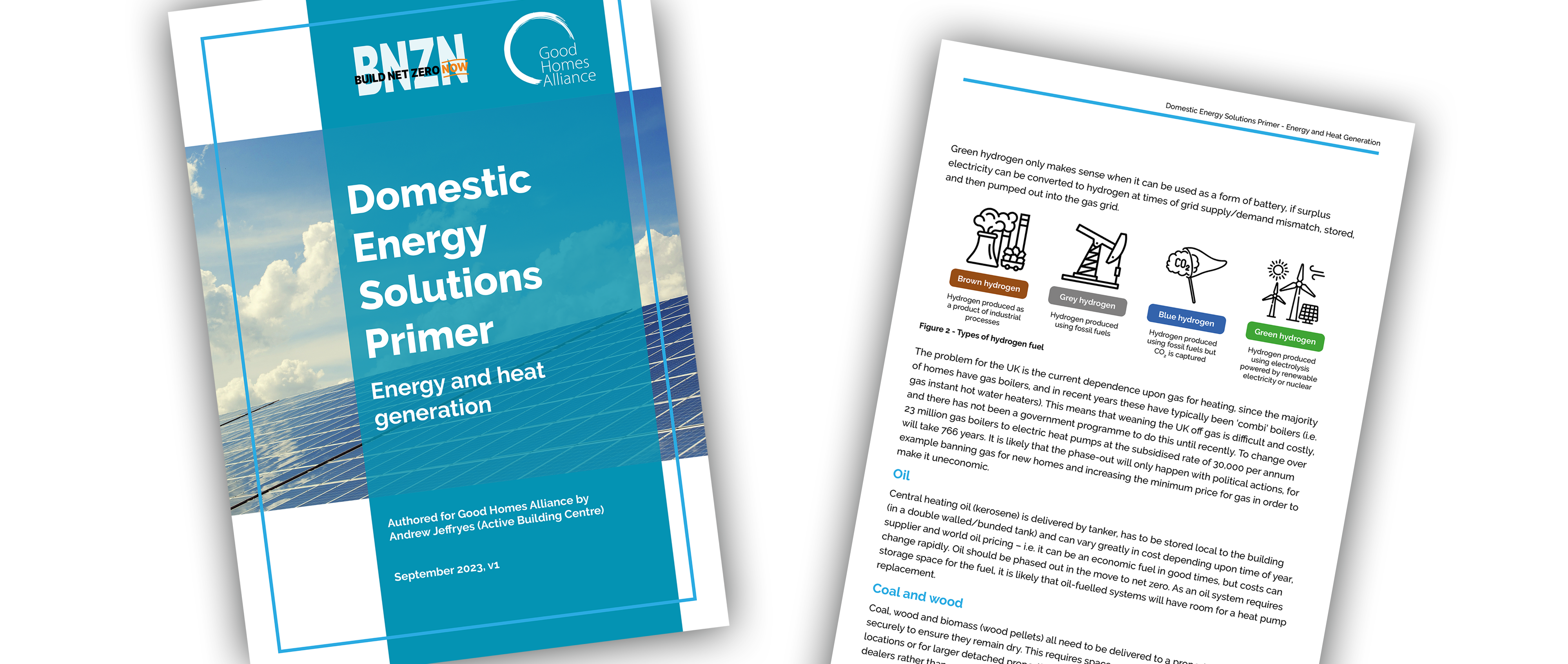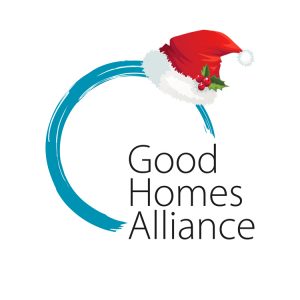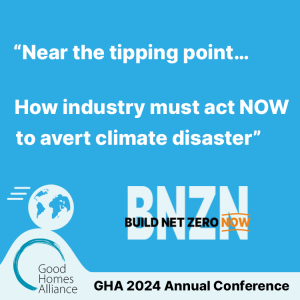-
The Good Homes Alliance (GHA) has been a supporter of a zero carbon approach to new homes since before 2010. We endorse the Advancing Net Zero campaign led by the UK Green Building Council. Our position is that all new homes in the UK should be required to achieve net zero carbon targets by 2030, and that leading developers should aim for net zero targets NOW.
The climate change situation has changed radically over the past few years, with declarations of a Climate Emergency by many local authorities leading to an increased emphasis on net zero/zero carbon homes.
The Chair of the Good Homes Alliance, Lynne Sullivan OBE, is leading a task force for the Green Construction Board to examine the journey that the industry needs to make in order to achieve that target. The Greater London Authority has also set a zero carbon target (with percentage improvement in emissions over building regulations) for all new homes in London, which has been in place since October 2016 and the draft new London plan proposes a requirement for energy monitoring post completion.
Two key factors, fabric energy efficiency and renewable energy generation, will make the journey to net zero carbon possible, which are examined in more detail below:
Fabric energy efficiency
The fabric first approach has long been established as the starting point for net zero carbon targets, for many reasons. First, this approach should lead to better living conditions in the homes, particularly in terms of thermal comfort. Second, it reduces the amount of renewables generation required to take the homes to net zero, making it more feasible to achieve the target. The GHA therefore endorses a fabric first approach.
There are a number of standards, targets and initiatives that address fabric energy efficiency. The GHA particularly supports the Passivhaus standard and the AECB building standard, as these address both energy efficiency and the performance gap, alongside other performance factors such as thermal comfort (summer and winter) and indoor air quality. The GHA is also working with LETI (the London Energy Transformation Initiative) to help identify the routes for achieving net zero carbon homes in London.
Renewable energy generation
Once the energy efficiency of a home has been improved, then net zero carbon homes will need to meet their remaining energy requirements through renewable energy generation.
There are numerous ways to provide renewable energy on new homes, the most popular of which is probably electricity generation through solar photovoltaics. Other approaches, such as solar hot water and ground- and air-source heat pumps address other forms of energy demand such as hot water supply and renewable heat. The Good Homes Alliance works with several organisations in this field, including the Solar Trade Association and the Renewable Energy Association.
However, there can be a mis-match between energy supply and demand, for example when solar electricity is required outside daylight hours, particularly in winter, whereas maximum generation will occur during the day, and probably in summer. It is therefore essential to aim to match the type of renewables used with the demand requirements; battery storage can also go some way to alleviating the mis-match problem, as well as providing the potential for electric vehicle charging. The GHA has therefore been working with SPECIFIC to explore possible solutions in this area.
Energy Solutions
As part of our Build Net Zero Now campaign Energy working group we have launched an introductory guide on domestic energy solutions. We would like to thank lead author Andrew Jeffryes, and Chris Brierley from Active Building Centre/Energy Systems Catapult for supporting this work.

The ‘primer’ covers energy generation, transformation and distribution, and is the first part in a series of guides on energy solutions, with further guides planned on energy storage and ‘smart grids’. The guide builds upon our 3-part ‘Energy Solutions for Net Zero Housing Development’ series co-hosted with The Green Register this June-July 2023, which featured speakers from Herschel, Allume Energy, Joju Solar, SNRG and CEPRO.
This guide is part one of a series, with a part 2 on energy storage available soon and a further guide planned on smart grids.
DOWLOAD THE DOMESTIC ENERGY SOLUTIONS PRIMER
As part of phase 3 of our BNZN campaign we will build upon the expert content presented in our guide and event series, and will continue to showcase, and interrogate the viability and performance of, emerging energy solutions through in-person site visits, demonstrations, dissemination of research findings, and case studies. If you are interested in supporting the campaign, please get in touch.
With thanks to our Energy working group participants for supporting this work:
Active Building Centre, Basingstoke Council, BCP Council, Bioregional, CEPRO, Greencore Construction, Oxford City Council, PureHaus, Sero, SNRG, South West Net Zero Hub, Southampton Council, Traxis, Vertigo (Mike Roberts, WG chair) and Verto Homes.
Related content

GHA + ASBP ‘Pitch’ Event and 2024 Christmas Party
Read More

GHA at Futurebuild 2024
Read More

Good Homes 2024 Annual Conference
Read More

